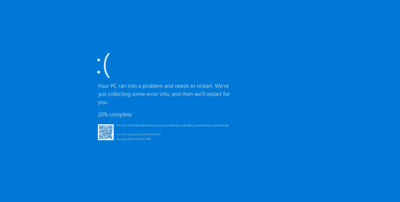Qos
-
Qos manage
- Bandwidth – speed of link (bps)
-
Delay
- One way delay – packet arrivng at destination
- Round trip delay – delay of receiver sending back packet
-
Jitter
- Variation of delay from initial packet to the next
-
Loss
- Packet loss
- QoE – quality of experience users’ perception of their use of application on the network.
- Flow – alll the data moving from one application to another over the network with one flow for each direction.
-
Cisco suggestion for Qos for Voice
- Bandwidth – 30-320 kbps
- Delay (one-way): 150ms or less
- Jitter: 30 ms or less
- Loss: 1% or less
-
Cisco suggestion for Qos Video
- Bandwidth: 3884 knps to 20+ Mbps
- Delay (one-way): 200 – 400 ms
- Jitter: 30 – 50 ms
- Loss: 0.1 % – 1%
-
Qos tools
-
Classification and Marking – about the marking of packets and the definition of trust boundries
- Marking – Qos tool changes one or more header field for later QoS processing to avoid complex configuration on every device along the direction.
-
Differentiated Services Code Point (DSCP) field – 6 bit field in the IP header meant for QoS marking.
- Cisco Network Based Application Recognition (NBAR) – cisco have 1000 or different sub category matching classification like cisco video, cisco voice, conference, and ip camera.
- Congestion Management (Queuing) – describes the scheduing of packets to give one type of packet priority over another.
- Shapping and Policing – explain these two tools together becase they are often used onn the opposite end of a link.
- Congestion avoidance – addresses how to manage the packet loos that occurs when network devices get too busy.
-
|
Field Name |
Header |
Length(bits) |
Where to Use |
|
DSCP |
IPv4,IPv6 |
6 |
End to end packet |
|
IPP |
IPv4,IPv6 |
3 |
End to end packet |
|
CoS |
8802.1Q |
3 |
Over VLAN trunk |
|
TID |
802.11 |
3 |
Over Wi-Fi |
|
EXP |
MPLS Label |
3 |
Over MPLS WAN |
- Expedited Forwarding (EF) DSCP – single value suggesting packet need low latency (delay), low jitter, and low loss. (46 deciaml)
-
Assured Forwarding (AF) DiffServ RFC (2597) – defines a set of 12 DSCP values meant to be used in convert with each other.
- Defines the concepto f four separate queues in a queuing system. Defines three levels of dropp priority within each queue for use with congestion avoidance tool. With four queues, and three drop priority classes per queue, you need 12 different DSCP marking, one for each combination of queue and drop priority.
-
Congestion Management
- First in first out (FIFO) scheduler
-
Round Robin Scheduler (Prioritazation)
- Takes a different number of packets (or bytes) from each queue, giving more prefernece ot one queue over another.
- Class-Based Weighted Fair Queuing (CBWFQ) tool to guarantee a minimum amount of bandwidth to each class. Each class receives at least the amount of bandwidth configured during times of congestion.
-
Low Latency Queuing
- LLQ sheduler to treat one or more queues as special priority queues.
-
Policing discard or remarks messages that exceed the policing rate.
- Measures the traffic rae over tiem for comparison to the configured policing rate.
- Allow for a burst of data after a period of inactivity.
- Enabled on an interface, in either direction, but typically at ingress.
- Discard excess messages, but can also remark the message so that it is a candidate for more aggressive discard later in its journey.
-
Shaping slow down messages that exceed the shaping rate.
- Shapers measure the traffic rate over time for comparison to the configured shaping rate.
- Shapers allow for bursting after a period of inactivity
- Shapers are enabled on an interface egress (outgoing packets)
- Shapers slow down packets by queuing them, and over time releasing them from the queue at the shaping rate.
- Shapers use queuing tools to create and schedule the shaping queues, which is very important for the same reason discussed for output queuing.
-
Congestion avoidance
- Discard some packets in TCP connectio
- Tail drop – any new packets arriving at a filled up queue right now will be dropped.
- Full drop – when queue is full beyond the threshold
- Drop packet less aggressively





